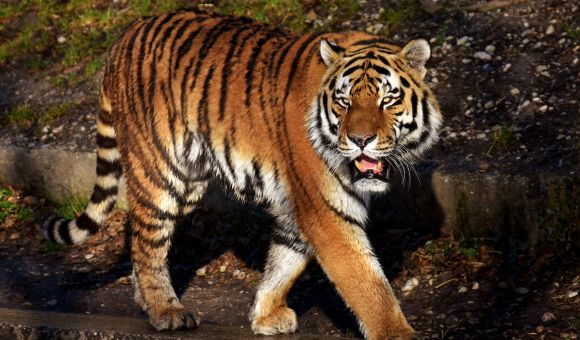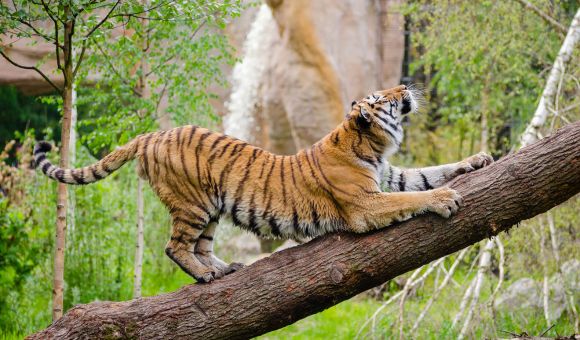In a poignant turn of events, India’s oldest tigress, known affectionately as Rajmata, has left an indelible mark on the conservation efforts at the Sariska Tiger Reserve in the state of Rajasthan. This majestic feline, marked as ST-2, breathed her last at the age of 19, succumbing to injuries and illness. This article aims to delve into the remarkable journey of Rajmata, shedding light on her pivotal role in reviving a once-barren reserve and her profound impact on the efforts to repopulate Sariska.
Rajmata’s Illustrious Background
Rajmata, aptly named the king’s mother, was not just any tigress; she was the daughter of the world-famous Machli, the most photographed tigress from Ranthambore. ST-2 entered the Sariska Tiger Reserve as part of India’s ambitious repopulation initiative after the reserve faced the grim reality of a complete extinction of its big cat population due to rampant poaching.

Tragic Demise and Medical Treatment
The tigress met her unfortunate end on a Tuesday evening within the confines of an enclosure where she had been undergoing medical treatment for the past three months. District Forest Officer DP Jagawat confirmed her demise, stating that wildlife doctors monitoring her health declared her dead after no movement was observed during a routine checkup. The injuries, particularly on her tail, led to her untimely demise.
Repopulation Efforts and Sariska’s Troubled History
Sariska National Park has endured a tumultuous history in preserving its tiger population, facing the notorious challenge of local poachers who decimated the big cat population for illegal trade. In 2004, the park faced an alarming situation when not a single tiger could be found, confirming the devastating impact of poaching. Sariska became the only tiger reserve since India’s independence without any tigers, and rebuilding its population became an arduous task.
ST-2’s Role in Resurrection
The turning point came in 2008 when ST-2 was relocated from the neighboring Ranthambore National Park to Sariska. This marked the beginning of a new era for the reserve. ST-2, with her majestic presence, became the catalyst for Sariska’s rejuvenation. She played a pivotal role in the birth of 25 out of the 30 cubs born in the park, including some of the most legendary tigers like ST-7, ST-8, ST-13, and ST-14.
Unprecedented Longevity
What sets ST-2 apart is not only her contribution to the repopulation but also her remarkable longevity. Tigers, on average, have a lifespan of 14 to 15 years, making ST-2’s 19-year existence a rare occurrence. Her enduring presence became a symbol of resilience for Sariska’s tiger population.
Sariska’s Ongoing Conservation Challenges
Despite ST-2’s significant contributions, Sariska National Park continues to face conservation challenges. The specter of poaching looms large, demanding ongoing efforts to safeguard the tiger population. The reserve’s troubled history serves as a stark reminder of the delicate balance required in preserving India’s rich biodiversity.
Conclusion
In the wake of Rajmata’s demise, we reflect on a life well-lived and a legacy that extends beyond her years. Her story epitomizes the triumph of conservation efforts against the odds, breathing life back into a once-barren reserve. As we celebrate the indomitable spirit of ST-2, we also recognize the ongoing challenges faced by Sariska National Park in ensuring the sustained well-being of its tiger population.


